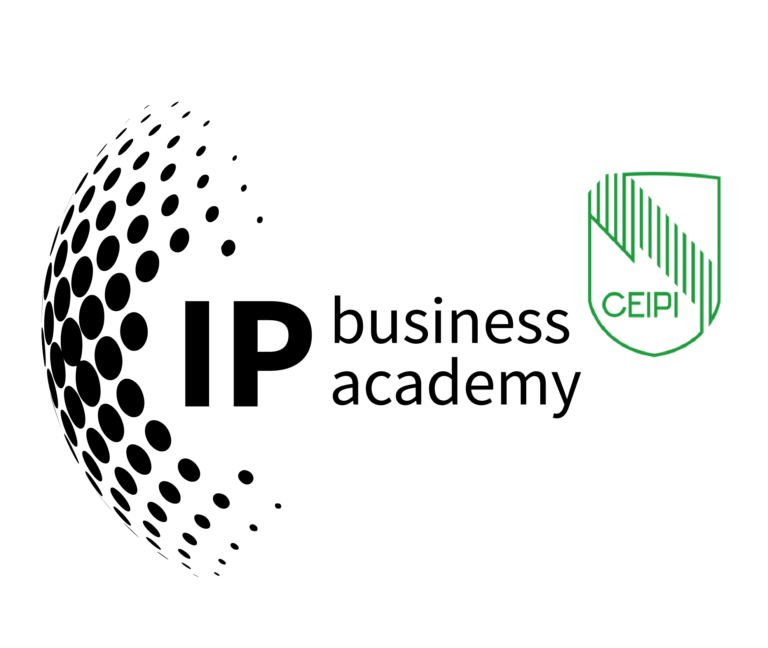Firm Performance and IP Management
The management practices within organizations play a crucial role in determining their productivity and overall performance. The paper “Management Practices and Productivity in Germany” by Broszeit et al. (2016) provides insights into how management maturity can be measured, the consequences of formalization, and the relationship between management and company performance. This blog post will explore these themes in detail, especially focusing on their implications for Intellectual Property (IP) management.
Sandra Broszeit, Ursula Fritsch, Holger Görg, Marie-Christine Laible; Management Practices and Productivity in Germany; IAB Discussion Paper 32/2016
Measuring the Maturity Level of Management
In the quest to understand the intricacies of management practices and their impact on organizational performance, the concept of a management score emerges as a pivotal tool. This score is derived from the “German Management and Organizational Practices” (GMOP) Survey, which meticulously evaluates various management practices across establishments in Germany. By focusing on 16 specific management practices, categorized into two primary groups— Incentives and Targets (I&T) and Data Driven Performance Monitoring (DDPM)—the GMOP provides a structured methodology for assessing management maturity.
Each practice is normalized on a scale from 0 to 1, where higher scores signify more formalized and structured management practices. This systematic approach not only facilitates direct comparisons between different establishments but also highlights the significant variability in management practices based on firm size. For instance, larger firms often exhibit higher management scores compared to their smaller counterparts, indicating a more developed framework of management practices.
The assessment criteria for determining management maturity encompass key elements such as clarity in production goals (Targets), the implementation of performance-based incentives (Incentives), and the regular monitoring of key performance indicators (Monitoring). Establishments that excel in these areas are generally regarded as having more mature management practices, which are closely linked to enhanced performance outcomes. Through this lens, we can better comprehend how structured management practices influence productivity and overall organizational success.
Consequences of High Degree of Formalization: Improved Productivity
A high degree of formalization in management leads to several positive outcomes that significantly enhance organizational performance. One of the most notable impacts is improved productivity Research indicates a robust positive correlation between higher management scores and labor productivity across various establishments. Specifically, an increase in the management score by 0.1 points correlates with a substantial rise in productivity, suggesting that structured management practices are instrumental in enhancing operational efficiency. This relationship underscores the importance of well-defined management frameworks in driving productivity gains.
In addition to productivity improvements, formalized management practices also foster employee motivation. Structured incentives, such as performance-based bonuses and clear promotion pathways, contribute to increased job satisfaction among employees. This heightened motivation not only enhances individual performance but also creates a more engaged workforce overall. When employees feel recognized and rewarded for their contributions, they are more likely to invest effort into their roles, further amplifying productivity levels within the organization.
Together, these positive impacts illustrate how a high degree of formalization in management can create a conducive environment for both operational efficiency and employee engagement, ultimately leading to superior organizational performance.
Potential Drawbacks
However, excessive formalization can also have negative consequences that organizations must consider. One significant drawback is the emergence of bureaucratic inefficiencies. When management structures become overly rigid, they can stifle creativity and flexibility within the organization. This rigidity makes it challenging for companies to adapt quickly to market changes, which is crucial in today’s fast-paced business environment. As a result, organizations may find themselves unable to innovate or respond effectively to new opportunities or threats, ultimately hindering their competitive edge.
Another potential issue arising from high levels of formalization is employee disengagement. If employees perceive the formalized processes as overly restrictive or impersonal, it can lead to a decline in morale and motivation. When individuals feel that their contributions are not valued or that they are merely cogs in a machine, their engagement levels drop. This disengagement can manifest in lower productivity, higher turnover rates, and a lack of commitment to organizational goals. Therefore, while structured management practices can enhance efficiency and performance, it is essential for organizations to strike a balance that allows for both structure and employee autonomy.
Management’s Relationship with Company Performance
Linking Management Quality to Performance: The research highlights a clear relationship between the quality of management practices and firm performance. Establishments that adopt structured management techniques tend to outperform their peers with less formalized approaches. This correlation is particularly strong among larger firms, suggesting that as organizations grow, the benefits of effective management practices become even more pronounced.
Implications for IP Management
For companies focused on managing intellectual property (IP), understanding the relationship between structured management practices and organizational performance is crucial. Effective IP management goes beyond merely having robust policies; it necessitates the establishment of structured processes that facilitate the monitoring and incentivizing of innovation. Organizations that adopt strong management practices are better equipped to protect their IP assets, as these practices create an environment conducive to creativity and efficiency.
The implementation of structured management systems allows firms to systematically track their IP assets, ensuring that innovations are not only developed but also adequately protected. By utilizing data-driven performance monitoring, companies can assess the effectiveness of their IP strategies, identifying areas for improvement. This approach enables organizations to respond swiftly to market changes and competitive pressures, thereby safeguarding their intellectual property.
Moreover, structured incentives linked to IP management can motivate employees to engage more actively in innovation processes. When employees understand that their contributions to IP development are recognized and rewarded, they are more likely to invest effort into creative endeavors. This culture of innovation is essential for maintaining a competitive edge in industries where intellectual property plays a pivotal role.
Firms that excel in management practices tend to have a clearer vision regarding their IP strategy, aligning it with overall business objectives. This alignment ensures that resources are allocated effectively toward protecting and leveraging intellectual property, ultimately enhancing the firm’s market position.
In summary, the implications for IP management are significant. Companies must prioritize the development of structured management practices that foster innovation and protect intellectual assets. By doing so, they can create a resilient framework that not only enhances productivity but also secures their competitive advantage in an increasingly complex marketplace.
Several recommendations can be derived for enhancing IP management within organizations based on the findings of his paper
- Implement Structured Management Practices: Organizations should prioritize the development of clear targets and incentives specifically focused on innovation and IP protection. This involves establishing measurable goals for activities such as patent filings and licensing agreements, which can provide a roadmap for success. By creating structured practices around these objectives, companies can ensure that their efforts in IP management are aligned with overall business strategies.
- Enhance Data-Driven Monitoring: Regular monitoring of key performance indicators related to IP activities is essential for effective management. This includes tracking metrics such as the number of patents filed, revenue generated from licensed technologies, and the overall impact of IP on business performance. A data-driven approach allows organizations to identify trends, measure success, and pinpoint areas that require improvement, ultimately leading to more informed decision-making.
- Foster a Culture of Innovation: Encouraging an organizational culture that values creativity alongside structured processes is vital for sustained success in IP management. This balance helps mitigate the risks associated with excessive formalization, allowing employees to feel empowered to innovate while still adhering to necessary guidelines. By promoting an environment where new ideas are welcomed and recognized, organizations can enhance their capacity for innovation and improve their competitive edge.
- Invest in Employee Training: Equipping employees with the necessary skills to navigate both formalized processes and creative problem-solving related to IP issues is crucial. Training programs should focus on developing competencies in areas such as patent law, market analysis, and strategic thinking, which are integral to effective IP management. By investing in employee development, organizations can cultivate a knowledgeable workforce that is better prepared to handle the complexities of intellectual property.
- Adapt Management Practices Based on Firm Size: It is important for organizations to recognize that smaller firms may require different approaches compared to larger ones when implementing structured management practices for IP. Smaller establishments might benefit from simplified processes that foster agility and responsiveness rather than rigid structures that could hinder their operations. Tailoring management practices to fit the specific needs and capacities of different firm sizes can lead to more effective IP management strategies and improved overall performance.
ISO 56005 and DIN 77006: Frameworks for Innovation and Knowledge Management
The ISO 56005 and DIN 77006 standards provide frameworks that align well with the findings and recommendations presented in the paper “Management Practices and Productivity in Germany.” These standards focus on innovation management and knowledge management, respectively, offering structured approaches that can enhance the effectiveness of IP management within organizations.
ISO 56005 emphasizes the importance of a systematic approach to innovation management, which includes defining clear objectives, establishing processes for idea generation, and implementing metrics for evaluating innovation performance. This aligns with the recommendation to implement structured management practices by encouraging organizations to set specific goals for their IP initiatives, such as patent filings or licensing agreements. By adopting this standard, firms can create a culture that prioritizes innovation while ensuring that their management practices are robust and measurable.
DIN 77006 complements this by focusing on knowledge management, which is crucial for effective IP management. It provides guidelines for capturing, sharing, and utilizing knowledge within an organization. This is particularly relevant to the recommendation of enhancing data-driven monitoring; organizations can leverage knowledge management systems to track IP activities and assess their impact on overall performance. By systematically collecting and analyzing data related to IP, firms can make informed decisions that drive innovation and enhance productivity.
Supporting Recommendations through Structured Standards
Both ISO 56005 and DIN 77006 support the recommendation to foster a culture of innovation by providing a structured approach that encourages employee engagement in creative processes. By integrating these standards into their operational frameworks, organizations can create an environment where employees feel empowered to contribute ideas and participate in innovation initiatives. This cultural shift not only enhances employee motivation but also leads to better outcomes in IP management.
Furthermore, the emphasis on investing in employee training within these standards ensures that staff are equipped with the necessary skills to navigate both formalized processes and creative problem-solving related to IP issues. Training programs aligned with ISO 56005 and DIN 77006 can help employees understand the importance of innovation and knowledge sharing, ultimately leading to more effective IP strategies.
Lastly, recognizing that smaller firms may require different approaches—as highlighted by DIN 77006—can help organizations adapt management practices based on firm size. The flexibility inherent in these standards allows smaller establishments to implement tailored solutions that meet their unique needs while still adhering to best practices in innovation and knowledge management.
In summary, the integration of ISO 56005 and DIN 77006 into organizational practices not only supports the recommendations derived from the paper but also enhances overall IP management effectiveness. By fostering structured approaches to innovation and knowledge management, companies can improve their competitive advantage in today’s dynamic business landscape.
Conclusion
The relationship between structured management practices and organizational performance is evident from the research conducted by Broszeit et al. (2016). By measuring the maturity level of management through established frameworks, organizations can enhance their productivity significantly. Furthermore, understanding these dynamics is essential for effective IP management, as robust managerial practices directly correlate with better protection and utilization of intellectual assets. Adopting these insights can lead firms towards improved performance and competitive advantage in their respective markets.
______________________________________________________
Further information:




